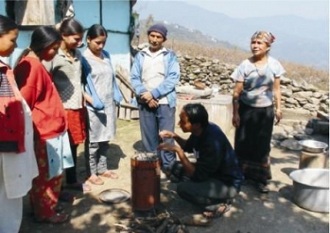PLoS One. Oct 3 2012;7(10)
Social, economic, and resource predictors of variability in household air pollution from cookstove emissions.
Yadama GN, Peipert J, Sahu M, Biswas P, Dyda V. George Warren Brown School of Social Work, Washington University in St. Louis, St. Louis, Missouri, United States of America.
We examine if social and economic factors, fuelwood availability, market and media access are associated with owning a modified stove and variation in household emissions from biomass combustion, a significant environmental and health concern in rural India. We analyze cross-sectional household socio-economic data, and PM(2.5) and particulate surface area concentration in household emissions from cookstoves (n = 100).
This data set combines household social and economic variables with particle emissions indexes associated with the household stove. The data are from the Foundation for Ecological Society, India, from a field study of household emissions. In our analysis, we find that less access to ready and free fuelwood and higher wealth are associated with owning a replacement/modified stove.
We also find that additional kitchen ventilation is associated with a 12% reduction in particulate emissions concentration (p<0.05), after we account for the type of stove used. We did not find a significant association between replacement/modified stove on household emissions when controlling for additional ventilation. Higher wealth and education are associated with having additional ventilation.
Social caste, market and media access did not have any effect on the presence of replacement or modified stoves or additional ventilation. While the data available to us does not allow an examination of direct health outcomes from emissions variations, adverse environmental and health impacts of toxic household emissions are well established elsewhere in the literature.
The value of this study is in its further examination of the role of social and economic factors and available fuelwood from commons in type of stove use, and additional ventilation, and their effect on household emissions. These associations are important since the two direct routes to improving household air quality among the poor are stove type and better ventilation.




